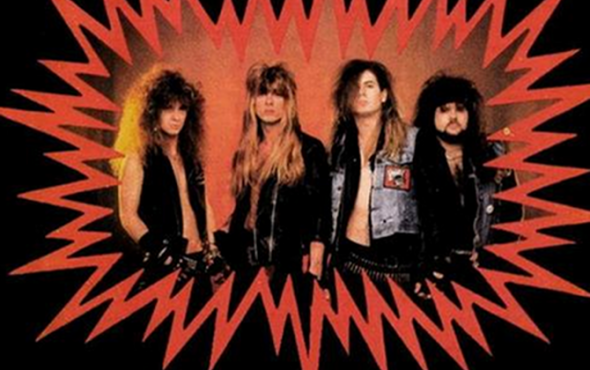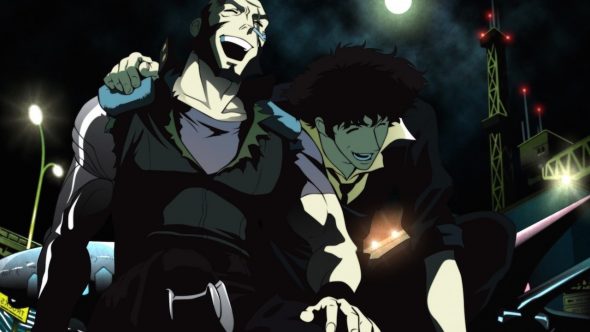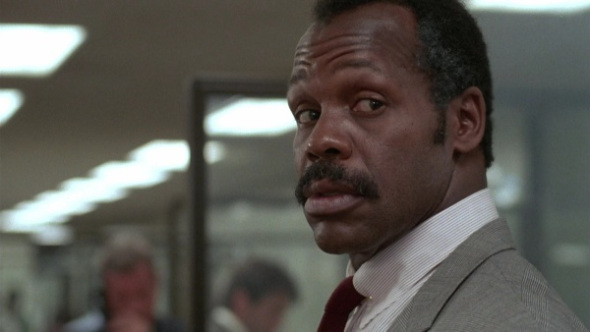There would be no point in reading this unless you’re already familiar with Cowboy Bebop. (If you need an introduction or a refresher, click here.) If you’re feeling ambitious, you also might want to read Georges Dumezil’s philological treatise Mitra-Varuna: An Essay on Two Indo-European Representations of Sovreignty. (It’ll probably take you a couple of weeks — no worries, I can wait.) Okay, you’re back? Good.
Georges Dumezil devoted his career to reconstructing proto-Indo-European society through comparative readings in folklore and mythology. His big idea was that you can figure out Proto-Indo-European religious and political structures through the same process that lets us use the similarities and differences between the Latin, Old Norse, and Sanskrit words for mother — māter, móðir, mātár — to derive the Proto-Indo-European word that they all derive from: *meHtér, however that’s pronounced. (The asterisk, by the way, means that we think a word like this ought to exist, but it’s never been observed in real life. I like this idea, and think that it should be applied outside of linguistics, so that you’d get things like *understated-Nicolas-Cage-performance and *reasonable-discussion-of-politics-on-the-internet.)
Dumezil’s most famous claim is that Indo-European society had two complementary concepts of political leadership, which are represented in ancient cultures by a linked pair of kings or gods. Mitra and Varuna in India. Tyr and Odin in Scandanavia. Nuada of the Silver Hand and Lugh Samildanach in Ireland. In Rome, there were actually three pairs: the gods Dius Fidius and Jupiter, the legendary kings Numa and Romulus, and the military heroes Gaius Mucius Scaevola and Horatius Cocles. All of these, claims Dumezil, are reflections of an older pair of proto-Indo-European deities, *Tiwaz, the priest-king, and *Wodhanaz, the magician-king.
(The takeaway here is that proto-Indo-European religion was metal as f__k.)

Live this Sunday from the Nassau Colosseum, it’s *Tiwaz the Priest King! j/k this is Pantera; Pantera used to dress like this.
The magician-king, Dumezil writes, “covers that which is inspired, unpredictable, frenzied, swift, magical, terrible, dark, demanding, totalitarian, iunior, and so on; whereas the other (the Mitra side) covers that which is regulated, exact, majestic, slow, juridical, benevolent, light, liberal, distributive, senior, and so on.” Priest-kings are associated with justice, duty, and family; their attribute is gravitas. Magician-kings with are associated with chaos, violence and fertility; their attribute is swiftness. Priest-kings are old, magician-kings young.
Now, I’m no philologist, so I don’t care to engage with the core of Dumezil’s argument. But I will say this: regardless of how well Dumezil’s archetypes describe ancient European religions, they do a damn fine job of describing every buddy cop movie ever made.
And oh my GOD do they ever describe Spike and Jet.
For instance, Priest-kings are associated with “conservation,” magician-kings with “fecundity,” which for Dumezil seems to mean death, growth, and rebirth. In Cowboy Bebop, Jet protects the characters he has interactions with (such as Mei and Alisa), while Spike tends to teach them things and get them killed (Rocco, Gren). Priest-kings rule in times of peace, magician-kings in times of tumult. The BeBop is Jet’s ship, he has the final word about where they go and when, but when it comes to fighting, it’s Spike that sets the agenda. We might fairly say that Mitra governs techne while Varuna governs gnosis (INT and WIS respectively, for my D&D chuckleheads out there), and sure enough, throughout the series, Spike has an affinity for magic and intuition, and is subtly opposed to technology, while Jet is a hacker and a mechanic who takes offense at supernatural mumbo-jumbo. Spike guesses the Space Trucker’s name (a magical, fairy-tale gesture), consults with fortune tellers, intuits the nature of the demon harmonica player’s bargain while ignoring Jet’s attempts to get at the same thing by science… Jet, on the other hand, tries to understand things rather than simply knowing them: he talks about the temporal matrix in harmonica boy’s ring, he tracks down Londes in the hospital. (I’ve been talking about Spike and Jet’s magic/science binary all along — I just didn’t realize until I read Dumezil that they were representing stone-age archetypes.) Both of Dumezil’s archetypes are associated with contracts and debts, although in rather different ways: the priest-king oversees debts that are paid, the magician king punishes debts that are unpaid. So Jet gets payback for his arm when he kills his partner, he makes restitution to Alisa, he fulfills his obligation to Mei’s father. Spike, on the other hand, punishes people who have violated natural law: Harmonica boy, Pierrot… I devoted a whole post to this tendency here.
Cowboy Bebop even reflects some aspects of the Mitra-Varuna archetypes that Dumezil doesn’t cover! Take the animal symbolism, for instance. Dumezil spends a lot of time talking about the magician-king’s association with horses. But he doesn’t bring up the magician-king’s more tenuous link to birds (Varuna “knows the track of birds that fly within the air,” Odin has two raven servants that fly around the world spying for him), or the priest-king’s ambivalent association with dogs (the priests appointed by Numa were not allowed to touch or name dogs, the Norse god Tyr lost his arm to a wolf, the Celtic Nuada is always pictured with a dog). Meanwhile, in Cowboy Bebop, Jet’s nickname is “The Black Dog,” and he’s Ein’s de-facto caretaker throughout the series. Andy and Vicious — both obvious doubles for Spike — have a pet horse and a pet bird respectively… and Spike himself has an affinity for cats, the symbolic anti-dogs. It doesn’t line up perfectly, but it lines up better than it should, is all I’m saying.
And if that’s not enough evidence, try this one on for size: over and over again, in every appearances in all the mythologies that Dumezil considers, the Priest-King is marked by a deformity of the hand.
The Priest-King: The One-Handed God
And the Magician-King is marked by a corresponding deformity of the eye.
Jet’s robot arm is pretty obvious, of course. Spike’s robot eye, less so — I’m pretty sure that when he tells Faye about it in the final episode, it’s supposed to be a surprise to the audience as well. (There are definitely closeups of Spike from earlier in the series where there’s no visible difference in the color of his eyes — in fact, I couldn’t promise you that the difference is visible in any shot at all other than this one.) But it’s not like the writers pulled it out of their butts Lost style, either. They teased it for a while: in “Jupiter Jazz,” Gren talks about the mismatched color of Spike’s eyes, and in “Pierrot le Fou” the killer freaks out because something about Spike’s face reminds him of the cat from the lab that he was tortured in… and the cat very clearly had a robotic eye. Spike’s eye, then, isn’t just some random piece of character design. Arguably it isn’t part of his character design: as it’s not part of how he’s usually drawn. Rather, it’s a reveal: when we finally get to see it, and hear Spike explain it, we’re getting narrative closure. And that closure is a lot more profound if we understand the underlying symbolism. “Oh, I get it! He’s Odin.”
Let’s talk about the specific nature of Spike’s eye injury. We’re meant to understand that when Spike left the syndicate, he got shot in the face and ended up with a robot eye that periodically malfunctions and shows him flashes of his old life with Julia and Vicious. (Like I mentioned in the last post, this means that the cutaway flashbacks that we’ve seen at various points over the run of the series — before the opening credits of the first episode, for instance, or during the falling-out-the window sequence in “Ballad for Fallen Angels,” for instance — are quite possibly supposed to be diegetic cutaway flashbacks: in these moments, we are actually seeing what Spike sees.) So we’ve got an amputated eye that shows him visions. And then there’s this image from the end of the opening credit sequence, which sort of looks like a camera lens adjusting focus in a deep pool of water…. this is presumably an extreme close-up on the mechanical eye in action.
There’s also a certain underwater quality to this image, from episode six, which presumably shows the doctors installing Spike’s eye. Yes?
Now, archetypes aside, underwater-ness is always associated with the past in Cowboy Bebop, so that pretty much makes sense already. But would it make even more sense when we remember that Odin, Norse mythology’s version of the magician-king, plucked out his eye and cast it into the spring that feeds the roots of the world-tree, in exchange for visions of the past, present, and future? The oldest accounts of this are very vague — but some modern retellings have it that Odin still sees through this eye: that it shows him the visions as it floats there in the mímisbrunnr.
Odin, I know | where thine eye is hidden
Deep in the wide-famed | well of Mimir
Mead from the pledge | of Odin each morn
Does Mimir drink: | would you know yet more?
And doesn’t this put a new slant onto Spike’s relationship with his past, and the grimly fatalistic way he marches off to his death in the final episode? And even on the way that he and Vicious seem fated to kill each other simultaneously at the end of the show?
Understanding the Mitra-Varuna archetypes doesn’t just help us understand Spike and Jet as characters. It also helps us understand the two basic plots that drive 90% of all Cowboy Bebop episodes. The first of these is the noir plot, in which a person is haunted, and eventually destroyed, by an old debt — some tragic secret out of their past. The second is the Bonnie and Clyde plot, in which two young lovers on the run rip off a powerful organization, and then live fast and hard until they inevitably are brought down. Really, these are two sides of the same coin: in one, the protagonist tries to move towards the traumatic past, in the other, he/she tries to move away from it. One is about the price of paying our debts, one about the price of not paying them… which are the Mitra and Varuna aspects, respectively, of contracts. So it looks like these archetypes are woven into the fabric of the show on a very deep level.
I’m totally serious about all of this, by the way. I know that sometimes here at OTI we are kind of kidding/not-kidding when we interpret pop culture through highfalutin’ philosophical frameworks. But not this time. I wouldn’t put serious money on the proposition that Watanabe et. al. were consciously drawing on Dumezil, but I think it’s more likely to be true than not. I mean, how else could these patterns have come from? It could just be a coincidence… but man, that would be a pretty thorough coincidence. It could be that these archetypes are built into the human psyche in a Carl Jung, collective unconscious kind of way, right down to the eye-hand business and the animal symbols. But if that were the case, we’d be seeing these images everywhere we looked. And you don’t.
I mean, you do get it quite clearly in Lord of the Rings, with Saruman’s symbol of the White Hand and Sauron’s symbol of the Red Eye. Saruman, the Mitra figure, is associated with technology and with the fulfillment of contracts (he tries to bargain with Sauron and hopes to extend the same bargain to Gandalf), and tries to take over Rohan by manipulating the political process. And note that although Saruman is literally a magician, he ends up losing his magic. Sauron, on the other hand, is more totalitarian (“he does not share power”), more swift, more supernatural, more overwhelming, more of a trickster. He’s associated with horsemen (the nine riders) just as Varuna is associated with centaurs. When he or one of his minions appears on the battlefield, his enemies are paralyzed with fear; this is an attribute of the Varuna figure in both Norse and Roman myth. (Amazingly, a quick search of google scholar suggests that nobody has made this connection yet, despite the fact that Tolkien, as a competent philologist working in the first half of the 20th century, must have been reading Dumezil. So… yeah. Free master’s thesis, I guess, if anyone wants it.) But other than that, you’ve got True Grit, (for which see this Slate article), and Cowboy Bebop… and that’s about it.
Anyway, intentional or not, the symbolism is there. And as a result, watching Cowboy Bebop after reading Dumezil is slightly richer experience. Which is saying something. The experience was already pretty damn rich.
We should mention in passing here that Dumezil brings up a third archetype, Indra the warrior god, who is opposed to both Mitra and Varuna. Indra’s important properties, for Dumezil, are as follows: 1) His followers form unofficial professional societies (warrior brotherhoods, etc.) that offer an alternative to the state’s normal social organization. 2) He offers the possibility of a clean break from the past, severing the bonds fastened by the magician-king, and dissolving the contracts officiated by the priest-king, and erasing the debts so important to both. Dumezil brings up a number of ancient examples of the Indra function, but the best example is probably the French Foreign Legion as it functioned during his own lifetime. Now, Dumezil doesn’t offer anything like a detailed investigation of the Indra/Ares/Thor archetype, at least not in that book. But perusing Wikipedia, I was REALLY SUPER FREAKING INTERESTED to learn that Indra is associated with water, hot-temperedness, and the color yellow. Just saying, is all.


